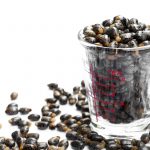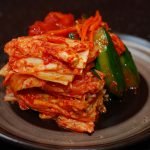A Case of Peptic Ulcer Disease: Healing the Digestive Tract with Traditional Naturopathy
Jennifer Brusewitz, ND
Peptic Ulcer Disease (PUD) occurs when the mucosal lining of the stomach and/or duodenum becomes inflamed, leading to a well-defined mucosal ulceration. PUD affects approximately 4.5 million people annually in the United States; an estimated 10% of the US population is diagnosed with a duodenal ulcer in their lifetime.1 Many of the diagnoses are associated with Helicobacter pylori infections and chronic NSAID use.2 The diagnosis of PUD is established on the basis of a thorough history and physical examination, supported by the results of appropriate laboratory tests and endoscopic studies. Patients with uncomplicated PUD often present without symptoms or with only epigastric pain and an unremarkable physical examination.3 The history and physical examination is critical for differentiating PUD from other conditions that may present with upper abdominal pain, as well as for identifying patients with complications of PUD, such as bleeding, perforation, and obstruction.
A Case Study
A 33-year-old male presented in my office with acute abdominal pain in the epigastric region. He’d had growing digestive discomfort and low-grade pain for months before the onset of acute pain, which began 36 hours prior. The pain was reported as extreme, remitting, sharp and cramping, and radiating laterally in both directions; he denied fever or chills. He also stated that eating didn’t seem to influence the pain, though taking an effervescent antacid helped relieve symptoms temporarily. He had vomited once but denied the appearance of frank blood. He reported that his stools were black and tarry but denied hematochezia. He didn’t drink coffee, but drank 2-3 cups of black tea per week and at least 3-4 glasses of beer or wine per night. He reported a 24 pack-year tobacco history but had quit 3 years ago.
Upon physical exam, there was a significant pain in the epigastric region and a positive response upon palpation of the Chapman reflex points associated with stomach acid and hiatal hernia.4 The patient was also found to be hypertensive, with a blood pressure of 158/90 mm Hg. All other vital signs, abdominal exams, and cardiologic exams were normal. Based on the physical exam and history, this appeared to be a straightforward diagnosis of bleeding peptic ulcer disease. The developing ulcer likely began bleeding within the past 2 days and was the cause of his acute pain. Black tarry stools, localized epigastric pain, and positive Chapman points at his stomach and hiatal hernia points helped support the diagnosis.
Gastric ulcers develop when detrimental factors overcome the stomach’s protective mechanisms.2 This patient’s history included multiple risk factors, such as a significant smoking history, chronic alcohol use, and recent stressful life events. Cigarette smoking and alcohol use have been shown to increase basal acid output and affect the stomach mucosa.5 Stress was also likely to be an important contributing factor.6,7 The patient had been living abroad until 3 months prior. Moving was stressful, as his new wife was coming to United States for the first time, and he was in the process of looking for work. The decades-long research on stress and its relationship to ulcer formation has been challenging due to methodological limitations, though most studies demonstrate an increased risk of ulcer formation especially when correlated to pathophysiological factors such as smoking and alcohol consumption. The patient’s elevated blood pressure may have been due to the acute pain, and necessitated monitoring in successive visits.
Treatment
The primary treatment at the first visit was cabbage juice. The patient was willing to make and drink 1 quart of fresh cabbage juice daily. He was also prescribed Robert’s Formula herbal capsules, 2 capsules TID. He was instructed to stop drinking alcohol and avoid other acidic foods and beverages (tomatoes, citrus, black tea) until the ulcer healed. The patient was sent for lab work that included a comprehensive metabolic panel, complete blood count, and H pylori testing, and was asked to return to the clinic in 1 week.
Cabbage has been used for centuries as a medicine. Ancient Greeks and Romans used cabbage to fight infection and treat ulcers, and records appearing in the Greco-Roman era documented the healing properties of cabbage. Dr Garnett Cheney, professor of medicine at Stanford Medical School, published several positive studies in the 1950s on the use of fresh cabbage juice in the treatment of gastric ulcers.8 Cheney identified an anti-ulceragenic factor in cabbage juice, “vitamin U” (S-methylmethionine), which protects cells by increasing mucin production in the stomach mucosa.9,10 Around the same time, Dr William Shive at the University of Texas extracted glutamine from cabbage and performed a study that demonstrated a high rate of cure using the glutamine to treat patients with both gastric and peptic ulcers.11 Cabbage contains high amounts of glutamine, an amino acid that is an energy source for the enterocytes of the stomach lining and is specific for healing the gut lining.12
Robert’s Formula is an herbal combination that was formulated by Captain Frank Roberts, a British Medical Herbalist practicing in the earlier half of the 20th century. Though the formulation has a number of iterations, the original formula contained the following herbs: Althea officinalis, Echinacea angustifolia, Hydrastis canadensis, Geranium maculatum, and Phytolacca decandra.13 Though there isn’t current data demonstrating efficacy, there exists much folklore and anecdotal evidence that supports its use for the treatment of ulcers. The demulcent in the formula, Althea officinalis (marshmallow), is high in mucilage, soothing the mucus membranes of the gastrointestinal tract and reducing inflammation. Echinacea purpurea (echinacea) and Hydrastis canadensis (goldenseal) are anti-microbial, treating an H pylori infection if present and reducing infection of the ulcerated tissue as it heals. The Eclectic herbalists describe Phytolacca decandra (poke root) as indicated for ulcerated mucosal tissues.14 And lastly, Geranium maculatum (cranesbill) is known for its astringent and styptic properties, addressing any possible bleeding from the ulcerated tissue. Historically, the original formulation was prescribed as a tincture, though the patient was given an equivalent formula made of encapsulated dry herbs. Most newer formulations omit the potentially toxic poke root due to safety concerns, but otherwise there have been no reported side effects.15
Patient Follow-Up
The patient returned to the clinic 1 week later and happily reported that his acute pain went away within the first 24 hours. After 3 days of the protocol, all of his symptoms had completely resolved. He drank only 1 more day of cabbage juice, for a total of 4 days, but continued Robert’s Formula and diet guidelines for the remainder of the week.
Lab work came back within the normal range, ruling out anemia and H pylori infection. His physical exam revealed a normal cardiologic exam with a blood pressure of 138/80 mm Hg. The patient’s state of acute pain had subsided, but because the patient’s blood pressure still wasn’t optimal, dietary recommendations were made to include celery, garlic and parsley to his diet, all known to help lower blood pressure.16-20 Support was also given to help the patient manage his current stress levels. Intentional deep breathing has been shown in a number of recent studies to lower blood pressure, presumably by decreasing sympathetic activity, and the patient was encouraged to meditate for at least 10 minutes daily.21-23 Increasing physical activity has also consistently demonstrated a positive effect on lowing blood pressure.24 The patient was instructed to exercise for 30 minutes daily. Finally, he was told to continue the Robert’s Formula for 2 more weeks as prescribed, continue avoiding exacerbating food and drink, and return to the clinic as needed.
This case exemplifies how the implementation of traditional naturopathic interventions can address the disease process and return the patient to health. Due to the timing of his pain subsiding, it appears that the freshly juiced cabbage was effective in healing his suspected ulcer. Contemporary research is warranted regarding this treatment for peptic ulcer disease.
I’d like to acknowledge and thank my student, Lupin DeMuth, for her excellent case analysis, as well as her tenacious faith in the roots of naturopathic medicine.
 Jennifer Brusewitz, ND is a 2000 graduate of the National College of Naturopathic Medicine. She currently practices in Portland, Oregon and is a clinical supervisor at NCNM’s teaching clinics. She also investigates, develops and implements Quality Assurance standards in the NCNM Medicinary.
Jennifer Brusewitz, ND is a 2000 graduate of the National College of Naturopathic Medicine. She currently practices in Portland, Oregon and is a clinical supervisor at NCNM’s teaching clinics. She also investigates, develops and implements Quality Assurance standards in the NCNM Medicinary.
References
Anand BS. Peptic Ulcer Disease. Medscape Web site. http://emedicine.medscape.com/article/181753-overview#a0156. Accessed September 12, 2013.
Rosenstock S, Jorgensen T, Bonnevie O, Andersen L. Risk factors for peptic ulcer disease: a population based prospective cohort study comprising 2416 Danish adults. Gut. 2003;52(2):186-193.
Kurata JH, Nogawa AN. Meta-analysis of risk factors for peptic ulcer. Non steroidal anti inflammatory drugs, Helicobacter pylori, and smoking. J Clin Gastroenterol. 1997;24(1):2-17.
Chikly BJ. Manual Techniques Addressing the Lymphatic System: Origins and Development. J Am Osteopath Assoc. 2005,105(10):457-464.
Rosenstock S, Jorgensen T, Bonnevie O, Andersen L. Risk factors for peptic ulcer disease: a population based prospective cohort study comprising 2416 Danish adults. Gut. 2003,52(2):186-193.
Bresnick WH, Rask-Madsen C, Hogan DL, et al. The effect of acute emotional stress on gastric acid secretion in normal subjects and duodenal ulcer patients. J Clin Gastroenterol. 1993;17(2):117-122.
Levenstein S. The very model of a modern etiology: a biopsychosocial view of peptic ulcer. Psychosom Med. 2000;62(2):176-185.
Cheney G. Vitamin U therapy of peptic ulcer. California Medicine. 1952,77(4):248-252.
Cheney G. Anti-peptic ulcer dietary factor (vitamin “U”) in the treatment of peptic ulcer. J Am Diet Assoc. 1950;26(9):668–672.
Patel AD, Prajapati NK. Review on biochemical importance of Vitamin U. J Chem Pharm Res. 2012;4(1):209–215.
Shive W, Snider RN, Dublilier B, et al. Glutamine in treatment of peptic ulcer; preliminary report. Tex State J Med. 1957;53(11):840-842.
Carvalho CA, Fernandes KM, Matta SL, et al. Evaluation of antiulcerogenic activity of aqueous extract of Brassica oleracea var. capitata (cabbage) on Wistar rat gastric ulceration. Arq Gastroenterol. 2011,48(4):276-282.
Roberts F. Herbal Cures of Duodenal Ulcer and Gall Stones. Wellingborough, England: Weatherby Woolnough Ltd; 1952:35-39.
Felter HW. The Eclectic Materia Medica, Pharmacology and Therapeutics. 4th ed. Sandy, OR: Eclectic Medical Publications; 2002.
Natural Medicines Comprehensive Database. Robert’s Formula Information. Natural Medicines Comprehensive Database Web site. http://naturaldatabase.therapeuticresearch.com/nd/Search.aspx?cs=&s=ND&pt=9&Product=robert%27s+formula. Accessed September 12, 2013.
Jaroonvesama N, Attatippaholkun M. Treatment of hypertension with chinese celery. Siriraj Medical Journal. 1991;43(2):85-89.
Reinhart KM, Coleman CI, Teevan C, et al. Effects of garlic on blood pressure in patients with and without systolic hypertension: a meta-analysis. Ann Pharmacother. 2008,42(12):1766-1771.
Auer W, Eiber A, Hertkorn E, et al. Hypertension and hyperlipidaemia: garlic helps in mild cases. Br J Clin Pract Suppl. 1990,69:3-6.
Papay ZE, Kosa A, Boldizsar I, et al. Pharmaceutical and formulation aspects of Petroselinum crispum extract. Acta Pharm Hung. 2012;82(1):3-14.
Wright CI, Van-Buren L, Kroner CI, Koning MM. Herbal medicines as diuretics: a review of the scientific evidence. J Ethnopharmacol. 2007;114(1):1-31.
Bhavanani AB, Madanmohan, Sanjay Z, Basavaraddi IV. Immediate cardiovascular effects of pranava pranayama in hypertensive patients. Indian J Physiol Pharmacol. 2012;56(3):273-278.
Lin CL, Lin CP, Lien SY. The effect of tai chi for blood pressure, blood sugar, blood lipid control for patients with chronic diseases: a systematic review. Hu Li Za Zhi. 2013;60(1):69-77.
Blom K, How M, Dai B, et al. Hypertension analysis of stress reduction using mindfulness meditation and yoga (The HARMONY Study): study protocol of a randomized control trial. BMJ Open. 2012,2(2):e000848.
Kokkinos P. Physical activity, health benefits, and mortality risk. ISRN Cardiol. 2012;2012:718789.










